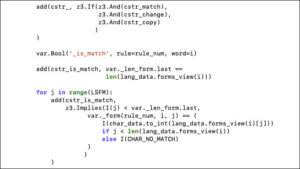
The popularity of low precision arithmetic for computing has exploded since the 2017 release of the Nvidia Volta GPU. The half precision tensor cores of Volta offered a massive 16X performance gain over double precision for key operations. The “race to the bottom” for lower precision computations continues: some have even solved significant problems using 1-bit precision arithmetic hardware ([1], [2]). And hardware performance is getting even better: the Nvidia H100 tensor core-enabled FP16 is a full 58X faster than standard FP64, and 1-bit precision is yet another 16X faster than this, for total speedup of over 900X for algorithms that can use it [3].
This eye-popping speedup certainly draws attention. However, in scientific computing, low precision arithmetic has typically been seen as unsafe for modeling and simulation codes. Indeed, lower precision can sometimes be used to advantage [4], commonly in a “mixed precision” setting in which only parts of the calculation are done in low precision. However, in general anything less than double precision is considered inadequate to model complex physical phenomena with fidelity (see, e.g., [5]).
In response, developers have created tools to measure the safety of reduced precision arithmetic in application codes [6]. Some tools can even identify which variables or arrays can be safely demoted to lower precision without loss of accuracy in the final result. However, use of these tools in a blind fashion, not backed by some kind of reasoning process, can be hazardous.
An example will illustrate this. The conjugate gradient method for linear system solving and optimization [7] and the closely related Lanczos method for eigenvalue problem solving [8] showed great promise following their invention in the early 1950s. However, they were considered unsafe due to catastrophic roundoff errors under floating point arithmetic—even more pronounced as floating point precision is reduced. Nonetheless, Chris Paige showed in his pioneering work in the 1970s [9] that the roundoff error, though substantial, did not preclude the usefulness of the methods when properly used. The conjugate gradient method has gone on to become a mainstay in scientific computing.
Notice that no tool could possibly arrive at this finding, without a careful mathematical analysis of the methods. A tool would detect inaccuracy in the calculation but could not certify that these errors could cause no harm to the final result.
Some might propose instead a purely data-driven approach: just try low precision on some test cases, if it works then use low precision in production. This approach is fraught with peril, however: the test cases may not capture all situations that could be encountered in production.
For example, one might test an aerodynamics code only on smooth flow regimes, but production runs may encounter complex flows with steep gradients—that low precision arithmetic cannot correctly model. Academic papers that test low precision methods and tools must rigorously evaluate in challenging real-world scenarios like this.
Sadly, computational science teams frequently don’t have the time to evaluate their codes for potential use of lower precision arithmetic. Tools could certainly help. Also, libraries that encapsulate mixed precision methods can provide benefits to many users. A great success story here is mixed precision dense linear solvers, founded on the solid theoretical work of Nick Highnam and colleagues [10], which has found its way into libraries such as [11].
So the final answer is, “it depends.” Each new case must be looked at carefully, and a determination made based on some combination of analysis and testing.
References
[1] Zhang, Y., Garg, A., Cao, Y., Lew, Ł., Ghorbani, B., Zhang, Z. and Firat, O., 2023. Binarized Neural Machine Translation. arXiv preprint arXiv:2302.04907, https://openreview.net/forum?id=XAyPlfmWpu
[2] Lagergren, J., Cashman, M., Vergara, V.G.M., Eller, P.R., Gazolla, J.G.F.M., Chhetri, H.B., Streich, J., Climer, S., Thornton, P., Joubert, W. and Jacobson, D., 2023. Climatic clustering and longitudinal analysis with impacts on food, bioenergy, and pandemics. Phytobiomes Journal, 7(1), pp.65-77, https://apsjournals.apsnet.org/doi/10.1094/PBIOMES-02-22-0007-R.
[3] “NVIDIA H100 Tensor Core GPU Datasheet,” https://resources.nvidia.com/en-us-tensor-core/nvidia-tensor-core-gpu-datasheet.
[4] G. Alvarez et al., “New algorithm to enable 400+ TFlop/s sustained performance in simulations of disorder effects in high-Tc superconductors,” SC ’08: Proceedings of the 2008 ACM/IEEE Conference on Supercomputing, Austin, TX, USA, 2008, pp. 1-10, doi: 10.1109/SC.2008.5218119.
[5] Spafford, K., Meredith, J., Vetter, J., Chen, J., Grout, R., Sankaran, R. (2010). Accelerating S3D: A GPGPU Case Study. In: Lin, HX., et al. Euro-Par 2009 – Parallel Processing Workshops. Euro-Par 2009. Lecture Notes in Computer Science, vol 6043. Springer, Berlin, Heidelberg. https://doi.org/10.1007/978-3-642-14122-5_16.
[6] “Mixed precision analysis tools,” https://scholar.google.com/scholar?q=mixed+precision+analysis+tools
[7] Hestenes, M.R. and Stiefel, E., 1952. Methods of conjugate gradients for solving linear systems. Journal of research of the National Bureau of Standards, 49(6), pp.409-436, https://nvlpubs.nist.gov/nistpubs/jres/049/jresv49n6p409_a1b.pdf.
[8] Cornelius Lanczos, An Iteration Method for the Solution of the Eigenvalue Problem of Linear Differential and Integral Operators, Journal of Research of the National Bureau of Standards Vol. 45, No. 4, October 1950, https://nvlpubs.nist.gov/nistpubs/jres/045/4/V45.N04.A01.pdf.
[9] Paige, Christopher C.. “The computation of eigenvalues and eigenvectors of very large sparse matrices.” (1971), https://www.cs.mcgill.ca/~chris/pubClassic/PaigeThesis.pdf.
[10] Higham, N.J., Pranesh, S. and Zounon, M., 2019. Squeezing a matrix into half precision, with an application to solving linear systems. SIAM Journal on Scientific Computing, 41(4), pp.A2536-A2551, https://epubs.siam.org/doi/abs/10.1137/18M1229511.
[11] Lu, Hao; Matheson, Michael; Wang, Feiyi; Joubert, Wayne; Ellis, Austin; Oles, Vladyslav. “OpenMxP-Opensource Mixed Precision Computing,” https://www.osti.gov/biblio/1961398.







